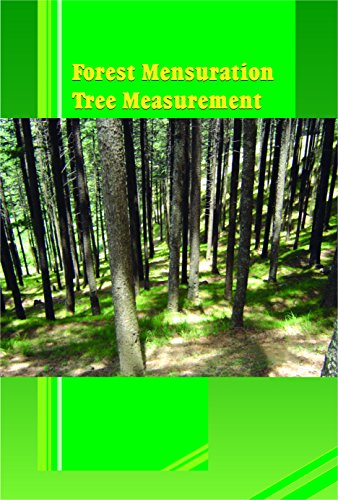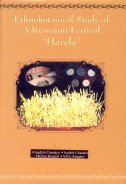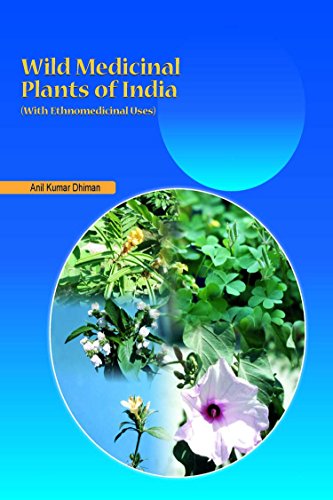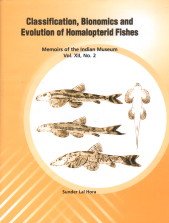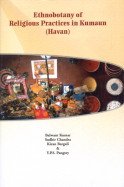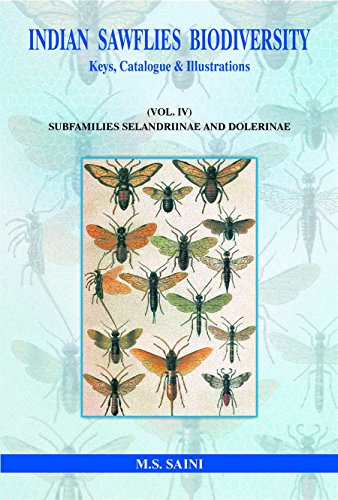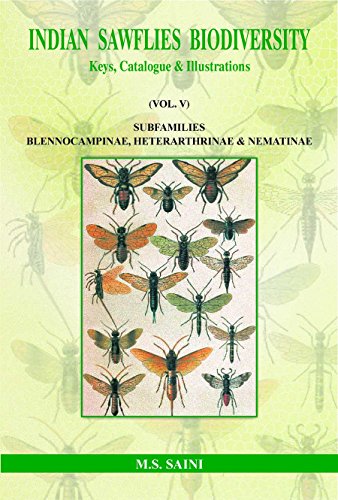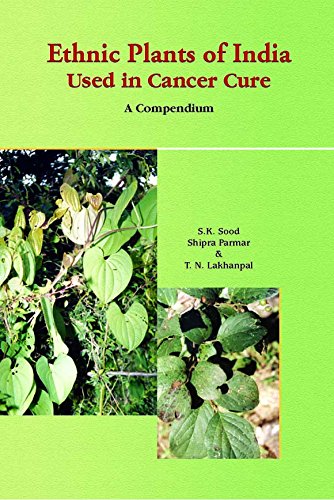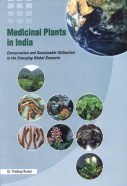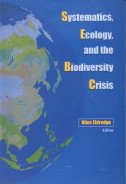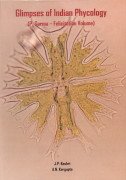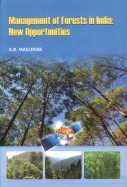bsmps dehra dun (55 results)
Product Type
- All Product Types
- Books (55)
- Magazines & Periodicals
- Comics
- Sheet Music
- Art, Prints & Posters
- Photographs
- Maps
-
Manuscripts &
Paper Collectibles
Condition
Binding
- All Bindings
- Hardcover
- Softcover
Collectible Attributes
- First Edition (1)
- Signed
- Dust Jacket (6)
- Seller-Supplied Images
- Not Printed On Demand
Seller Location
Seller Rating
-
Forest Mensuration : Tree Measurement
Published by BSMPS, Dehra Dun, 2008
ISBN 10: 8121106788ISBN 13: 9788121106788
Seller: Vedams eBooks (P) Ltd, New Delhi, India
Book
Hardbound. Condition: As New. New. Contents Foreword. Preface. I. Chapters 1. Introduction to forest mensuration. 2. Diameter/girth measurement. 3. Measurement of height. 4. Measurement of volume. 5. Tree form. 6. Measurement of branch woods. 7. Tree crown. 8. Measurement of bark. 9. Age of trees. 10. Tree growth and increment. II. Solved numericals. III. Mensuration exercises 1. Bark measurement exercise. 2. Stump analysis. 3. Stem analysis. 4. Increment boring. 5. Age of standing tree. 6. Preparation of general volume table by graphical method. 7. Measurement of Complete Tree Parameters (CTP). IV. Annexures 1. Christen Hypsometer. 2. Haga Altimeter. 3. The Abney Level. 4. Increment Borer. Abbreviations. Bibliography. Index. One who works with forest must measure it. He may be a forester land owner forestry student researcher scientist contractor laborer sawyer owner of wood based industries trader involved in business of forest produces transporter of forest produce or forest owner. Knowledge of tree measurement is required during forest produce being felled converted sold purchased transported used or put for some research analysis. Because of this reason Forest Mensuration is one of the important forestry subject prescribed in the curriculum of forestry education and training for Indian Forest Services and State Forest Services probationers as well as for the basic training of frontline staff at the forest colleges/schools. It is also a component of forestry that is being offered as one of the subjects at various agricultural and forestry universities in India and abroad. It is observed that knowledge of mathematics is a prerequisite for Forest Mensuration however majority of forestry students have an aptitude for biological rather than mathematical sciences. This is one of the reasons why it is difficult for students to understand Forest Mensuration. This simple handy and practical book has been written keeping the above facts in mind. The book is an attempt by the author to help the students to understand the concept in a simple and understandable form. The book is based on the several years of teaching experience of the author at the State Forest Service College Dehradun. The book covers measurement of tree attributes like diameter girth height volume form tree crown biomass age bark and increment in detail. In addition the book covers various solved numericals based on practical problems to stimulate the independent thinking among the tree lover about this important branch of forestry. The portion on Mensuration exercises is an attempt to standardize the various exercises and to generate the added interest among the students to understand the subject. The book would have a great utility for all the field level officers who are engaged in preparation of inventory of the tree resources. The book would be a very useful reference material for the working plan offices timber depot various forestry training institutes universities where forestry is being taught and schools where environment study is one of the upcoming subject. 220 pp.
-
Community Watershed Development : Experiences from Doon Valley : The Indian Himalayas
Published by BSMPS, Dehra Dun, 2009
Seller: Vedams eBooks (P) Ltd, New Delhi, India
Hardbound. Condition: As New. New. Contents Preface. 1. Introduction. 2. Purpose of the study and methodological issues. 3. Agricultural impact. 4. Animal husbandry. 5. Minor irrigation. 6. Supporting activities. 7. Summary of impact findings. 8. Recommendations for future policies. Appendix 1. Focus group analysis. 2. Term of references. 3. Schedule and questionnaire. From the preface The present publication is the outcome of agricultural impact study conducted in Doon Valley of Uttarakhand during the year 2001. This study was made on the initiation of WS Aitkins UK which was the technical team behind the EEC funded watershed development project. The completion of the study led to some concrete recommendations which were found useful in future watershed developmental projects. These findings were discussed over the years with experts working in different areas of the world. The deliberations in different seminars workshops and visits to African and Asian countries led to the understanding that these findings must be published for greater benefit of the people working in watershed development. This resulted in the publication of findings in the form of present book. It is expected that these recommendations will be helpful for hill based community watershed developmental projects. This book will be of great use to the researchers agriculturists foresters policy planners and decision makers. 96 pp.
-
Ethnobotanical Study of a Kumauni Festival Harela
Published by BSMPS, Dehra Dun, 2005
ISBN 10: 8121104769ISBN 13: 9788121104760
Seller: Vedams eBooks (P) Ltd, New Delhi, India
Book
Hardbound. Condition: As New. New. Contents 1. Introduction. 2. Festivals. 3. Harela. 4. History of agriculture. 5. Smarta deities. 6. Local deities. 7. Crops. 8. Folklore about Harela. 9. Biodiversity of seeds. 10. Photographs. 11. Plants of Harela mentioned in other ethnobotanical uses. 12. Discussion. 13. Summary. 14. References. 15. Informants. 16. Appendix Plants included. 68 pp.
-
Agrotechniques for High Altitude Medicinal and Aromatic Plants : Silver Jubilee Publication of
Published by BSMPS, Dehra Dun, 2004
ISBN 10: 812110338XISBN 13: 9788121103381
Seller: Vedams eBooks (P) Ltd, New Delhi, India
Book
Hardbound. Condition: As New. New. Contents Foreword. Preface. 1. Introduction. 2. Aconitum balfourii (bruhl) muk. 3. Aconitum heterophyllum Linn. 4. Allium species. 5. Angelica glauca edgew. 6. Carum carvi Linn. 7. Dactylorhiza hatagirea (D.Don) Soo. 8. Hedychium spicatum Smith. 9. Jurinea dolomiaca Boiss. Syn. Jurinea macrocephala (Royle) Clarke. 10. Megacarpaea polyandra Benth. 11. Nardostachys jatamansi DC. 12. Onosma sp. and Arnebia benthamii. 13. Paris polyphylla Smith. 14. Picrohiza kurrooa Royle ex Benth. 15. Podophyllum hexandrum Royle. 16. Polygonum rumicifolium Royle ex Bab. Syn. Aconogonum rumicifolium (Royle ex Bab.) Hara. 17. Polygonatum spp. 18. Rheum emodi Wall. ex Meissn. 19. Rheum moorcroftianum Royle. 20. Saussurea costus (Falc.) Lipsch. 21. Swertia Chirayita (Roxb. ex Flem.) Karsten. References. Annexures. From the foreword Publication of Agrotechniques of High Altitude Medicinal Plants by HAPPRC fulfills a long pending demand which had remained unmet for nearly a decade now. It only shows how much work still remain to be done when we realize that out of 17 000 known aromatic plants species in India nearly 2000 are in active use and nearly 800 species have been identified as having medicinal value. This publication will not only be received with open arms by all but will encourage all practitioners in the field. 202 pp.
-
Aid to the Study of Hamilton Buchanans Gangetic Fishes : Memoirs of the Indian Museum: Vol: IX: No4
Published by BSMPS, Dehra Dun, 2006
ISBN 10: 8121104939ISBN 13: 9788121104937
Seller: Vedams eBooks (P) Ltd, New Delhi, India
Book
Hardbound. Condition: As New. New. Contents Introduction. 1. Gangetic Fishes. 2. Controversy regarding Buchanan's Manuscript fish drawings. 3. Controversy regarding Buchanan's zoological collections and the importance of his fish drawings. 4. Buchanan's drawings of Indian fish. 5. Use made of Buchanan's fish drawings. 6. Day's work on Buchanan's manuscript drawings. 7. Table showing details regarding Buchanan's manuscript and published drawings. 8. List of references. 169-236.
-
Classification Bionomics and Evolution of Homalopterid Fishes : Memoirs of the Indian: Vol XII
Published by BSMPS, Dehra Dun, 2006
ISBN 10: 812110551XISBN 13: 9788121105514
Seller: Vedams eBooks (P) Ltd, New Delhi, India
Book
Hardbound. Condition: As New. New. Contents Introduction. Classification. I. Family Homalopteridae i. Subfamily Homalopterinae 1. Homaloptera van Hasselt emend. Van der Hoeven. 2. Sinohomaloptera Fang. 3. Balitora Gray. 4. Lepturichthys Regan. 5. Hemimyzon Regan. 6. Sinogastromyzon Fang. ii. Subfamily Gastromyzoninae 1. Protomyzon gen. Nov. 2. Annamia gen. Nov. 3. Crossostoma Sauvage. 4. Vanmanenia gen. Nov. 5. Formosania Oshima. 6. Parhomaloptera Vaillant. 7. Pseudogastromyzon Nichols. 8. Sewellia gen. Nov. 9. Beaufortia gen. Nov. 10. Neogastromyzon Popta. 11. Gastromyzon gunther. II. Bionomics and Evolution 1. Adhesion and progression. 2. Respiration. 3. Feeding. III. Literature. 263-342.
-
Hardbound. Condition: As New. New. Contents 1. Preface Everything else but remunerative. 2. Abbreviations. 3. AgriMatters Does agriculture really matter. 4. The competitive advantage of Indian agriculture. 5. Strengthen the farmers stake in agribusiness. 6. A partnership Tango called Calypso. 7. Beyond CD ratios know how to show how and seedlings to speedlings. 8. Can inclusive growth and exclusive education go together. 9. Four seminars one idea consolidate the farm produce. 10. The potato growers of Alberta. 11. Seeds of prosperity. 12. The Green Revolution mid life crisis and beyond. 13. Who is to be blamed for farmer suicides. 14. Leadership and management issues in co operatives. 15. Agflation the new term in the Lexicon. 16. A constitutional amendment for co operatives. 17. Equity redemption in co operatives. 18. The Pay Commission and Lakhpati farmers. 19. Triumph of the potato. 20. IT applications in agriculture co operatives the Indian experience. 21. Managing co operatives the role of professionals. 22. The ICU NCUI and The Co operative Movement. 23. Sharad Joshi's discourse on agriculture. 24. The World Bank Rediscovers agriculture. 25. The ITPO vs. NREGA. 26. A farmer's budget Déjà vu. 27. To be or (to) not to be GM crops in agriculture. 28. Sixty thousand crores strengthening institutions or dispensing largesse. 29. The fertilizer crisis what should be done. 30. A long term view on oilseeds exports. 31. Agri clinics new role for agricultural graduates. 32. Every dark cloud brings silver along. 33. A bagging question Jute bags versus plastic woven sacks. 34. Export policy and livelihood of primary producers. 35. Governance issues in co operatives. 36. Looking for development in the Doha round. 37. Loan Waivers and Tractor Hours. 38. An oasis close to the horizon. 39. Away from the headlines news from page eight. 40. Conservation agriculture the way forward. 41. The viability of financial inclusion. 42. Learning from the Election Commission. 43. Agriculture forecasts ground realities in the space age. 44. The user pays and has his say. 45. Building the absorptive capacities (As You Sow So Shall You Reap). 46. A tale from two states. 47. The great wall of APMC. 48. Zero tillage a number one idea. 49. A dollar a day keeps the World Bank at Bay. 50. PVP the IPR for agriculture. 51. The SAARC Milk Grid. 52. South Asia A landscape of milk and honey. 53. The Kisan Corporate dialogue. 54. The Arthashastra on agriculture. 55. Globalisation and primary producers (Part 1). 56. Globalization and primary producers (Part 2). 57. Stuffed and starved what lies behind the world food crisis 58. The DAP is not a silver bullet. 59. Fertilizer subsidy. 60. A new currency for the farmer warehouse receipt. 61. The amber blue and green boxes. 62. Learning from the global meltdown co operatives as a viable option. 63. Convergence is the new buzzword. 64. Her field her crops her choice. AgriMatters is a compilation of the weekly column penned by Sanjeev Chopra currently posted as the Secretary Agriculture of West Bengal. From Independence Day 07 he has been sharing his concerns about the dilemmas faced by the farmers agricultural scientists policy makers and agribusiness organisations. He feels that while the farmers have done a commendable job in achieving global competitive edge the failure of transparent price discovery mechanism agri warehousing and logistics has not given the commensurate returns to the farmers. He makes a strong case for agricultural co operatives taking the leadership position in the rural economy from agricultural extension services to supply of credit and partnership with processing firms for value addition. Given the size and structure of India's land holdings it would be best if co operatives established partnership farming with exporters and corporate to leverage their mutual strengths. The articles cover a wide range from the Arthashastra on agriculture to Sharad Joshi's discourse on agriculture and the Amber Blue and Green Boxes und the WTO pri.
-
Ethnobotany of Religious Practices in Kumaun Havan
Published by BSMPS, Dehra Dun, 2007
ISBN 10: 8121105811ISBN 13: 9788121105811
Seller: Vedams eBooks (P) Ltd, New Delhi, India
Book
Hardbound. Condition: As New. New. Contents 1. Introduction. 2. Meaning of Havan. 3. List of sixteen ceremonies. 4. List of local Gods and Goddesses. 5. Method of Havan. Havan in Kumaun is performed on various auspicious occasions to seek blessings of the Gods. Various plants and plant products which are being used by humans for day to day needs are used in Havan. In other word the burning of mixture of various aromatic herbs in the fire accompanied by invocation and offering to the Gods is known as Havan. Many Chants are also based on the plants. In addition many plants are worshipped at the time of Havan according to the occasion. All plants are not used in same Havan. In this study the description of Havan is based on the sixteen important ceremonies (p.7) considered important in the life of a human being. In folklore and practice Havan is also performed at various occasions in addition to these sixteen ceremonies. Special attention has been paid to Karnhvedh Jneu and Wedding ceremonies (35 plants 33 other products 18 plants used for Havan samagri). Ceremonies where Havan is prohibited are listed. A short account of local Gods (13) Goddesses (5) have been described in addition to those worshipped by Hindus throughout India. Folk songs (on seven plants) folk lores (on eight plants) used in Havan are also given. Our cultural practices like Havan have served purpose of bringing the whole community together imparting message of purity and cleanliness. It has served the purpose of conserving our traditional heritage since the time of Vedas and Puranas. 138 pp.
-
Achievements and Prospects in Pteridophytes
Published by BSMPS, Dehra Dun, 2007
Seller: Vedams eBooks (P) Ltd, New Delhi, India
Hardbound. Condition: As New. New. Contents Preface. Professor S.P. Khullar Biographic sketch. 1. Fern allies of Uttaranchal enumeration and distribution/Y.P.S. Pangtey and L.M. Tiwari. 2. Pteridophytic Flora of Bilaspur Himachal Pradesh Part. I A General account of Bilaspur District and 13 most common Pteridophytes/M.K. Seth and Sunil Kumar. 3. Phytogeography of Pteridophytic Flora of Satpura Hills (Central India) an over view/S.M. Vasudeva. 4. Distribution and ethnobotanical notes on Pteridophytes growing in Hills of Jharkhand/Shobha Rani Singh Binod Kumar and Ram Pravesh. 5. A list of doubtful species of Ferns from the North Western Himalaya in Chandra's The Ferns of India/Y.P.S. Pangtey. 6. Reproductive biology of Homosporous Ferns a review/S.S. Sharma. 7. Compartmentalization of the Fern Genome and the Gene Block Hypothesis Revisited/S.C. Verma. 8. VAM Associations in Cheilanthes Swartz (Sinopteridaceae)/I.B. Prasher and Anju Baghla. 9. Micropropagation of rare aquatic ferns/Harvinder K. Cheema. 10. Azolla a floating fern to an excellent experimental model system/A. Sood A.S. Ahluwalia and P.K. Singh. Index to genera and species. Author index. From the Preface Pteridophytes with an independent gametophyte and sporophyte were probably the first of the land plants that originated on earth. With the passage of time these unique plants established and flourished on land and were once the dominating vegetation on earth. However with the large scale change in climatic conditions these plants unable to cope with the prevailing environment started vanishing gradually. Pteridophytes having enormous ornamental value as tools of research in genetical and reproductive biology for their role in forest productivity need much more attention. This volume contains ten research papers and reviews on various aspects of pteridophytes by eminent pteridologists of the country not only highlighting the achievements but also pointing out the areas where lot of work needs to be done. 162 pp.
-
Hand Book on Silviculture of Indian Trees
Published by BSMPS, Dehra Dun, 2007
ISBN 10: 8121105730ISBN 13: 9788121105736
Seller: Vedams eBooks (P) Ltd, New Delhi, India
Book
Hardbound. Condition: As New. New. Contents 1. India's forests. 2. Family Anacardiaceae Annonaceae Bixaceae and Bombacaeae. 3. Family Capparaceae and Casuarinaceae. 4. Family Caesalpinaceae Cochlospermaceae and Combretaceae. 5. Family Coniferae. 6. Family Dilleniaceae and Dipterocarpaceae. 7. Family Euphorbicaeae Fabaceae Flacourtiaceae and Graminae. 8. Family Guttiferae and Juglandaceae. 9. Family Leguminaceae. 10. Family Lythraceae Magnoliaceae Malvaceae Meliaceae Moringaceae and Myrtaceae. 11. Family Salicaceae Santalaceae Sapotaceae Scruphulariaceae Tamaricaceae Theaceae and Verbenaceae. References and bibliography. This handbook describes the Silviculture of more than 100 tree species belonging to 33 families. It covers their distribution phenology silvicultural characters natural regeneration artificial regeneration management and utilization. These species include semal casuarina terminalia chir pine blue pine deodar fir spruce dipterocarps oaks eucalyptus poplars tropical pines sisham sal prosopis rosewood toon sandal and bamboos. This handbook is meant for use by foresters students scientists and tree growers. 288 pp.
-
Indian Sawflies Biodiversity : Keys Catalogue and Illustrations : Vol: II: Subfamily Tenthredininae
Published by BSMPS, Dehra Dun, 2007
Seller: Vedams eBooks (P) Ltd, New Delhi, India
Hardbound. Condition: As New. New. Contents Introduction. Materials and methods. Family Tenthredinindae (Key to Subfamilies). Subfamily Tenthrediniae (Key to genera). 1. Genus Aglaostigma Kirby. 2. Genus Beldonea Cameron. 3. Genus Colochelyna Konow. 4. Genus Conaspidia Konow. 5. Genus Cromaphya Rohwer. 6. Genus Macrophya Dahlbom. 7. Genus Metallopeus Malaise. 8. Genus Neocolochelyna Malaise. 9. Genus Neocorymbas Saini et al. 10. Genus Pachyprotasis Hartig. 11. Genus Peus Konow. 12. Genus Propodea Malaise. 13. Genus Rhogogaster Konow. 14. Genus Siobla Cameron. 15. Genus Tyloceridius Malaise. Abbreviations. Bibliography. Illustrations. Index to the scientific names. This compilation on Indian Sawflies Biodiversity is the first comprehensive monographic treatment after Malaise 1945 that puts together an up to date know how regarding the taxonomic information on subfamily Tenthredininae excluding genus Tenthredo L. from Indian subcontinent. Prior to the works of Saini and his co workers i.e. about two and half decades back there was very meager and scanty information regarding this Sawfly Taxon. If seen in terms of arithmetic before Saini and his party took up this group for further studies from this region only 30 species belonging to 12 genera were on record. And the present picture is all together changed one with 130 species belonging to 15 genera which include 75 species and 1 genus as new to science and 2 genera along with 25 species as the first record. Nevertheless to accomplish this arduous task a thorough and repeated survey of all high altitude forest regions along the entire Himalayan belt was undertaken. In its present form this work on Indian Tenthredininae provides an elaborate identification keys to all of its taxa their detailed catalogue illustrations and diagnostic features. It is not known why sub order Symphyta (Hymenoptera was not covered under Fauna of British India volumes but it certainly turned out to be the main reason for the stunted taxonomic growth of this insect group particularly at the hands of Indian naturalists. Summeringly this treatment is sure to go a long way in removing the existing lacunae and bankruptcy of knowledge thus paving a way for those enthusiasts who would intended to dig deep into this field of research. 234 pp.
-
Indian Sawflies Biodiversity : Keys Catalogue and Illustrations : Vol: IV: Subfamilies Selandriinae
Published by BSMPS, Dehra Dun, 2006
ISBN 10: 8121105080ISBN 13: 9788121105088
Seller: Vedams eBooks (P) Ltd, New Delhi, India
Book
Hardbound. Condition: As New. New. Contents Introduction. Material and methods. Taxonomic characters. Subfamily selandriinae. Key to the Indian genera of Selandriinae. Genus 1. Alloselandria Malaise. 2. Anapeptamena Konow. 3. Aneugmenus Hartig. 4. Busarbia Cameron. 5. Busarbidea Rohwer. 6. Busarbina Malaise. 7. Canonarea Malaise. 8. Canonias Konow. 9. Denticornia Malaise. 10. Duplunguis Malaise. 11. Edenticornia Malaise. 12. Hanumantus Saini Singh Singh and Singh. 13. Hemitaxonus Ashmead. 14. Heptamelus Haliday. 15. Iconia Malaise. 16. Neostromboceros Rohwer. 17. Neothrinax Enslin. 18. Nesoselandria Rohwer. 19. Ridgea Saini and Saini. 20. Strongylogaster Dahlbom. Subfamily dolerinae Thomson. 21. Dolerus Panzer. Author's remarks regarding some species. The latest position of subfamilies. Selandriinae and dolerinae. Abbreviations. Bibliography. Index to the scientific names. This book embodies the first revisionary work on subfamilies selandriinae (1944). To the previous knowledge only 11 genera covering 20 species under these two subfamilies 10 genera and 110 species (both new as well as the first record) have been added by the author and his co workers. This contribution is an outcome of an extensive and intensive surveys of all high altitude regions both along the entire Himalayan belt as well as South Indian Hills during the last 24 years. By providing elaborate identification keys both at generic and species level detailed catalogue illustrations and diagnostic features of all genera this work not only compiles the hitherto scattered information regarding these two subfamilies it also lays a very sound foundation for the future workers intending to work on different aspects of these insects. Furthermore since the suborder symphyta (hymenoptera) as a whole was not covered under Fauna of British India volumes so due to lack of proper identification keys this economically important group of insects remained intentionally or unintentionally ignored at the hands of Indian naturalists. However the present contribution will definitely cover this flaw and the future symphytologists of this region will not feel handicapped from this angle and are sure to further contribute tremendously in this field. 168 pp.
-
Indian Sawflies Biodiversity : Keys Catalogue and Illustrations: Vol: V: Subfamilies Blennocampinae
Published by BSMPS, Dehra Dun, 2006
ISBN 10: 8121105226ISBN 13: 9788121105224
Seller: Vedams eBooks (P) Ltd, New Delhi, India
Book
Hardbound. Condition: As New. New. Contents Introduction. Material and methods. Subfamily blennocampinae Konow. Key to the Indian genera of blennocampinae. Genus 1. Amonophadnus Rohwer. 2. Anisoartha Cameron. 3. Ardis Konow. 4. Corpilus Malaise. 5. Davida Saini and Vasu. 6. Diranga Saini and Vasu. 7. Eutomostethus Enslin. 8. Loopica Saini and Vasu. 9. Neoclia Malaise. 10. Pasteelsia Malaise. 11. Periclista Konow. 12. Phymatoceridea Rohwer. 13. Phymatoceropsis Rohwer. 14. Senoclidea Rohwer. Subfamily Heterarthrinae Benson Key to Indian genera of heterarthrinae. 15. Birmindia Malaise. 16. Caliroa O. Costa. 17. Heterarthrus Stephans. 18. Metallus Forbes. 19. Profenusa MacGillivray. 20. Satabara Ross. Subfamily Nematinae Dalla Torre Key to the Indian genera of nematinae. 21. Amauronematus Konow. 22. Cladius Illiger. 23. Craesus Leach. 24. Hemichroa Stephens. 25. Megadineura Malaise. 25. Nematus Panzer. 26. Pachynematus Konow. 27. Priophorus Dahlbom. 28. Pristiphora Latreille. The latest position of these subfamilies. Abbreviations. Bibliography. Index to the scientific names. The present volume on Indian Sawflies Biodiversity is the first comprehensive monographic work that puts forward an up to date account of taxonomic knowledge regarding blennocampinae heterarthrinae and nematinae. Till about two decades back very meagre taxonomic knowledge regarding these three subfamilies was widely known only 14 genera covering 22 species from the faunistic limits of India. However a substantial contribution has been made by Saini and his co workers during the last 23 years wherein they brought to light 15 additional genera covering 85 species (both new as well as first record). Nevertheless to accomplish this arduous task a thorough survey of all high altitude forest regions along the entire Himalayan belt was made. This work provides elaborate identification keys detailed catalogue illustrations and diagnostic features of all taxa so far recorded from India under these three subfamilies. Since sub order symphyta (Hymenoptera) was not covered under Fauna of British India volumes so due to lack of very basic know how regarding this insect group any further taxonomic work particularly by Indian workers remained stranded. Summarisingly this contribution is sure to remove any existing bankruptcy of knowledge and definitely pave a path for those enthusiasts who intend to dig deep into this field and keep the further scope of research alive. 182 pp.
-
Adaptive Management of Medicinal Plants and Non Timber Forest Products : Strategies Implications
Published by BSMPS, Dehra Dun, 2008
Seller: Vedams eBooks (P) Ltd, New Delhi, India
Hardbound. Condition: As New. New. Contents Foreword. Preface. Acknowledgements. Abbreviations. Medicinal Plant/Non Timber Forest Product sector emerging strategies for conservation and sustainable management/Giridhar A. Kinhal and R. Jagannatha Rao. I. Models and systems for adaptive management 1. Sustainable harvesting of medicinal plants/Non Timber forest products Development of methodology concepts and practices/Giridhar A. Kinhal R. Jagannatha Rao and Anna Lawrence. 2. Sustainable wild collection of medicinal and aromatic plants a perspective from the World Conservation Union (IUCN)/Danna J. Leaman Sriyanie Miththapala and Asheem Srivastava. 3. Impact of extraction on Decalepis hamiltonii Wight and Arn. an experiment from BR Hills Karnataka/K.S. Murali. 4. Sustainable harvesting a paradigm for conservation of medicinal plants/Sudipta Rath. 5. Myths and preconditions of sustainable use of medicinal plants in Southern India/Utkarsh Ghate and John Britto. II. Documentation and application of traditional knowledge 6. Documentation application and assimilation of traditional knowledge on sustainable harvesting of medicinal plants/Non Timber Forest Products/R. Jagannatha Rao and Giridhar A. Kinhal. 7. Medicinal plants diversity in different agroforestry systems in South India/Santoshagouda V. Patil and D. Depommier. 8. Role of local health traditions in primary health care/P.M. Unnikrishnan. 9. Documentation and promotion of indigenous knowledge for NTFP Management a case of honey harvesting/Kunal Sharma and Samitha Vasudevan. III. Participatory action models for training and capacity building 10. Sustainable harvesting of medicinal plants/Non Timber forest products training capacity building and dissemination/Giridhar A. Kinhal and R. Jagannatha Rao. 11. MAP focused efforts for enhancing conservation and livelihoods MAPPA Initiatives in Asia/Madhav Karki D. Choudhary Nirmal Bhattarai and C.L. Choudhary. 12. Building capacity of women for sustainable utilisation of medicinal plants and self reliance in primary health care through Home Herbal Gardens (HHGs)/Roopa D. Bhatti and G. Hariramamurthy. IV. Adaptive planning for sustainable management 13. Sustainable harvesting of medicinal plants/Non timber forest products adaptive planning and management/R. Jagannatha Rao and Giridhar A. Kinhal. 14. Linking tribal medicinal plant cooperatives and manufacturing firms for better rural livelihood and sustainable use of resources/M.S. Harilal. 15. Sustainable harvest practices and implementation a case study of Gram Mooligai Company Limited (GMCL)/Covenant Centre for Development (CCD)/John Britto and Syed Aamir Khurshid. V. Strategies and policy interventions for adaptive management 16. Minor Forest Product (MFP) management in Orissa Review of policies and implementation/Avinash Upadhyaya. 17. Internalization of sustainable management methodology for NTFPs into forest management statutory issues and institutional concerns/Arvind Kumar Jha. Summary implications and recommendations for sustainable management of medicinal plants/Non timber forest products in India/Giridhar A. Kinhal and R. Jagannatha Rao. List of authors and their addresses. Non Timber Forest Products more particularly those of medicinal value are among major sources contributing to the economic development. These also play an important role in the socio economic uplift improvement of cultural lifestyle and health care of tribal and rural people. The ever growing demand of these products has put a great pressure on the resources. The situation has been further aggravated by destructive and unsustainable harvesting and inefficient trade practices. The impact of these practices has been relatively less understood and there is a general lack of strategies for achieving sustainability in collection and conservation. The book incorporates articles dealing with Resource Management in different States of India. The book attempts to bridge the gaps related to understanding with regard to NTFP Management. It provides.
-
Ethnic Plants of India : Used in Cancer Cure : A Compendium
Published by BSMPS, Dehra Dun, 2005
ISBN 10: 8121104726ISBN 13: 9788121104722
Seller: Vedams eBooks (P) Ltd, New Delhi, India
Book
Hardbound. Condition: As New. New. Contents Preface. 1. Introduction. 2. The previous work. 3. The methodology. 4. Observations. 5. Discussion and conclusions. 6. Literature cited. Appendices 1. Index to total number of genera and species under various divisions of plant kingdom. 2. Index to families. 3. Index to uses of various species under genus for the cure of tumour and cancer ailments. Indices 1. Index to botanical names. 2. Index to English names. 3. Index to Hindi names. 4. Index to Sanskrit names. The compendium provides valuable data on 633 species belonging to 464 genera reported to be used by the indigenous people of India for the cure of various types of tumour and cancer a worldwide problem and the most feared of all diseases covering details of nomenclature English Hindi and Sanskrit names Distribution Part/s used Medical preparation Single/combination Specificity for tumour/cancer Active constituents Biological activity and the original source of information. Over 15 species dealt with in the text are illustrated. It is therefore hoped that the present compendium would serve as a valuable resource to students and scholars of ethnobotany chemists pharmacologists as well as for those engaged in work in different disciplines of plant sciences and a must for scientific and university libraries. 314 pp.
-
Medicinal Plants in India : Conservation and Sustainable Utilisation in the Emerging Global
Published by BSMPS, Dehra Dun, 2006
ISBN 10: 8121105374ISBN 13: 9788121105378
Seller: Vedams eBooks (P) Ltd, New Delhi, India
Book
Hardbound. Condition: As New. New. Contents Foreword. Preface. 1. Introduction. 2. Resource base of medicinal plants. 3. Demand and supply. 4. Exports and emerging global scenario. Medicinal plants are an important subset of biodiversity which has lately emerged as a hot topic of discussions at various national and international fora. Medicinal plants have an unique significance for India and have remained a part of our cultural ethos from time immemorial. They meet the health needs of large sections of population provide raw materials to various Indian systems of medicine and are an important source of livelihood to forest dwelling communities. India with its rich resource base and traditional knowledge regarding use of medicinal plants has the potential to emerge as a world leader in this sector but many problem areas need to be talked. The book is a socio economic study of medicinal plants sector. It seeks to critically examine the various dimensions or the sector which have a bearing on conservation and sustainable utilization of medicinal plants. The issues like demand and supply nature of markets benefit sharing arrangements trend of exports and likely impact of developments in the field of biotechnology and emerging intellectual property regime have been analyzed. The available literature on the subjects and the feedback received from various stakeholders like collectors of medicinal plant traders pharmacies foresters and scientists has been used to arrive at findings on various issues. Non availability of accurate and reliable data on various aspects of medicinal plants sector is a major handicap in the study of this sector. The present survey methods for medicinal plants are inadequate and the time series data regarding population density of various medicinal plants is not available which makes it difficult to ascertain the health status of medicinal plants. However the available reports clearly indicate that various medicinal plants are facing different degrees of threat to their existence. The book dwells on various problem areas which inhibit the growth of this sector and makes recommendations for the holistic development of this sector. 258 pp.
-
Forest Hydrology
Published by BSMPS, Dehra Dun, 2005
ISBN 10: 8121104777ISBN 13: 9788121104777
Seller: Vedams eBooks (P) Ltd, New Delhi, India
Book
Hardbound. Condition: As New. New. Contents Preliminary remarks. Symbol list. 1. Hydrologic perspective i. Planetary view. ii. Water's importance. iii. Historical perspective. iv. Modern impetus. v. Hydrologic sciences. 2. Hydrologic entities i. Water properties. ii. Hydrologic processes. iii. Hydrologic units. 3. Atmospheric water i. Atmospheric humidity. ii. Precipitation analysis. iii. Catchment precipitation. 4. Precipitation disposal i. Canopy interception. ii. Canopy throughfall. iii. Stemflow characteristics. iv. Litter interception. v. Infiltration potential. 5. Subsurface water i. Infiltration process. ii. Subsurface storage. iii. Subsurface flow. 6. Vaporization processes i. Evaporation principles. ii. Forest transpiration. iii. Total Vaporization. 7. Water yield i. Discharge processes. ii. Yield determinants. iii. Management effects. 8. Water quality by W.E. Sharpe and D.R. De Walle i. Quality parameters. ii. Natural quality. iii. Timber harvesting. iv. Ecosystem disturbance. v. Quality sampling. 9. Special topics i. Water management. ii. Watershed rehabilitation. iii. Flood mitigation. iv. Snow hydrology. v. Municipal watersheds. 10. Hydrologic observations i. Climate stations. ii. Energy flow. iii. Forest precipitation. iv. Precipitation disposal. v. Subsurface water. vi. Vaporization processes. vii. Streamflow measurement. Subject index. 349 pp.
-
Algal Indicators of Water Pollution
Published by Dehra Dun (BSMPS), 1996
ISBN 10: 812110128XISBN 13: 9788121101288
Seller: Vedams eBooks (P) Ltd, New Delhi, India
Book First Edition
Hardcover. Condition: New. 1st Edition. Contents: 1. Introduction. 2. Description of the river Gomati sampling points. 3. Materials and methods. 4. Observations: A. Physico-chemical factors. B. The algal periodicity. 5. A. Taxonomic descriptions (Bacillariophyceae). B. Ecology of taxa (Bacillariophyceae). 6. Observations: the Shannon index (H). 7. Discussion: periodicity and interrelationship of physico-chemical factors. 8. Discussion: algal periodicity and interrelations. 9. Discussion: ecology of dominant diatom taxa. 10. Discussion: the Shannon index (H) periodicity and relations. General summary and conclusions. References. "This book describs a study carried on the ecology of Benthic river algae with special reference to Bacillariophyceae and relations of physico-chemical and biological variables to pollution. The work was conducted on the river Gomati within the municipal limits of Lucknow, Uttar Pradesh, India." (jacket) [B.N. Prasad was Professor and Head, Department of Botany, Lucknow University. He also wrote Freshwater Algal Flora of Andaman and Nicobar Islands (in 2 volumes).].
-
Medicinal Plants of Nagaland
Published by BSMPS, Dehra Dun, 2007
Seller: Vedams eBooks (P) Ltd, New Delhi, India
Hardbound. Condition: As New. New. Contents Foreword and messages. Preface. Introduction. 1. Enumeration of plant species. 2. Bibliography. 3. Glossary of medical and botanic terms. 4. Index to botanical names. 5. Index to common names. The book is an illustrated compendium of Medicinal Plants of Nagaland a pre dominantly Tribal State of India. It is a part of North Eastern Region of the Country bestowed with a rich and interesting floral diversity which holds an array of medicinal and aromatic plants. A number of plants of high therapeutic value have been reported which have proven values in different medicinal systems. This book is a systematic documentation of existing knowledge grey literature and researched efforts on the subject matter. The strength of the book lies in its simplicity and clarity of presentation without loosing sight of other important information which interest everyone. Authenticated colour photographs of medicinal plants supported by short and informative description given in the book will greatly help in conservation and augmentation of resources. The indigenous tribal society has its own methods of treatment and health care acquired through traditional knowledge. Many of the locally occurring plants are very effectively used for this purpose. Some of these hold promise to yield panacea in the future. The details given in this regard will be very useful for ethno pharmacological studies in the area. The book may be immensely useful for students researchers medical practitioners as well as the foresters planners and policy makers working in the area of medicinal plants. It may also be useful as ready reference in the hands of naturalists and eco tourists. 396 pp.
-
Systematics Ecology and the Biodiversity Crisis
Published by BSMPS, Dehra Dun, 2006
ISBN 10: 812110548XISBN 13: 9788121105484
Seller: Vedams eBooks (P) Ltd, New Delhi, India
Book
Hardbound. Condition: As New. New. Contents Introduction systematics ecology and the biodiversity crisis/Niles Eldredge. 1. Where the Twain Meet causal intersections between the genealogical and ecological realms/Niles Eldredge. 2. Patterns of biodiversity/Norman I. Platnick. 3. Systematic versus ecological diversity the example of the Malagasy Primates/Ian Tattersall. 4. Spilling over the competitive limits to species coexistence/George Stevens. 5. Explaining patterns of biological diversity integrating causation at different spatial and temporal scales/Joel Cracraft. 6. Phylogenetic and ecologic patterns in the phanerozoic history of Marine Biodiversity/J. John Sepkoski Jr. 7. The meaning of systematics and the biodiversity crisis/Michael J. Novacek. 8. Phylogenetic analysis and the role of systematics in the biodiversity crisis/Melanie L.J. Stiassny. 9. Systematics biodiversity and conservation biology/George F. Barrowclough. 10. Systematics and Marine Conservation/Judith E. Winston. 11. The Conservation of Animal Diversity in Cuba/Gilberto Silva Taboada. 12. Living collections and biodiversity/Nathan R. Flesness. 13. Third World Museums and biodiversity/P.E. Vanzolini. Contributors. Index. Which species can be saved when all cannot. Systematics Ecology and the Biodiversity Crisis provides critical tools for finding answers to the current of systematic biology. Systematists are in a unique position to identify critical areas of endemism and additional criteria for the identification of habitats and species most urgently in need of protection. The result of a symposium held at the American Museum of Natural History this book fills a void created by other volumes that have explored the biodiversity crisis exclusively from an ecological stance. It may well be that the dynamics of extinction processes will prove to be exclusively in the domain of moment by moment interactive processes of matter energy transfer the realm of ecology. But the problems of extinction Eldredge argues can be defined recognized measured and assessed only through the tools of the systematist. Included are noted systematists paleontologists and ecologists who explore the relationship between ecology and systematics as it pertains to understanding the origin maintenance and loss of biological diversity. The role of museums zoos and related institutions is also examined. 220 pp.
-
Common Fiber Yielding Plants of North-West Himalayas : With Special Reference to Uttrarakhand
Published by BSMPS, Dehra Dun, 2009
Seller: Vedams eBooks (P) Ltd, New Delhi, India
Hardbound. Condition: As New. New. Contents Preface. I. Introduction 1. A brief overview of the state Uttarakhand. 2. Vegetational zones. 3. Traditional usage of fiber in Uttarakhand. II. Ethnic communities associated with natural fibers 1. People of Uttarakhand. 2. Communities associated with natural fibers. III. Fibers 1. Fiber classification. 2. Utilization of some important fibers. IV. The fibrous plants of Uttarakhand 1. Zonewise categorization of fiber yielding plants. 2. Altitude wise suggested prioritized fiber yielding plant species. V. Fiber extraction 1. Extraction process. 2. Commercially important natural fibers. VI. The description of fiber yielding plans. VII. Yield statistics of prioritized species 1. The SWOT. 2. Growing importance of natural fibers and the way ahead. References. Index. A diverse range of natural fibers are produced in many countries providing an important source of income for farmers and can play an important role in improving food security eradicating poverty the United Nations Assembly 20 December 2006 decided to proclaim 2009 as the year of natural fibers. The book describes about some of the fiber yielding plants of N.W. Himalayas with special reference to Uttarakhand many of the natural fibers described have been traditionally used by the rural communities some of the traditional processing techniques employed have been described along with other natural fiber plant species that have the potential to provide alternative employment opportunities. 174 pp.
-
Indian Sawflies Biodiversity : Keys Catalogue and Illustrations : Vol: VI: Argidae Cimbicidae
Published by BSMPS, Dehra Dun, 2009
Seller: Vedams eBooks (P) Ltd, New Delhi, India
Hardbound. Condition: As New. New. Contents Introduction. Material and methods. Family Argidae Key to the Indian genera of Argidae. 1. Genus Aproceros Malaise. 2. Genus Arge Schrank. 3. Genus Athermantus Kirby. 4. Genus Cibdela Konow. 5. Genus Pampsilota Konow. 6. Genus Pseudosinarge Saini 168 pp.
-
Glimpses of Indian Phycology : P Sarma Felicitation Volume
Published by BSMPS, Dehra Dun, 2005
ISBN 10: 8121103339ISBN 13: 9788121103336
Seller: Vedams eBooks (P) Ltd, New Delhi, India
Book
Hardbound. Condition: As New. New. Contents Foreword. I 1. Charophyte cytology and its implication in systematics phylogeny and phytogeography of extant charophyta/B.R. Chaudhari. 2. Cytotaxonomic study of the Charales (charophyceae chlorophyta) from West Bengal India/Samit Ray. 3. More interesting charophytes from Tamil Nadu/D. Subramanian. 4. Desmids from foothills of Garhwal Himalaya/Iqbal Habib. 5. A note on sirogonium illinoiense (transeau) Smith and Mougeotia laetevirens (Braun) Wittrock from West Bengal India/D. Mukherjee. II 6. Cyanobacteria in agriculture/B.D. Kaushik and Rashmi Tyagi. 7. Ecophysiology of cyanobacteria under diverse environmental conditions/S.P. Adhikary. 8. Studies on the effect of inoculum quality and type in relation to establishment of cyanobacteria in rice field/M.K. Shivaprakash Vidya Kulkarni and Binu Koshy. 9. Heterocyst formation in cyanobacteria pattern forming mutants/D.N. Tiwari and Shila Raju. 10. Akinete induction in heterocystous cyanobacteria under the influence of nitrogen in growth medium/M.K. Shivaprakash Vidya Kulkarni and Binu Koshy. 11. Effect of a pesticide on the photosynthetic efficiency and nitrogen fixing capacity of a cyanobacterium under laboratory controlled conditions and its ecotoxicological significance/Alka Sahu S.K. Sahu and Ashok K. Panigrahi. 12. Cultural behaviour and growth potential of Oscillatoria vaucher (cyanophyceae) isolated from rice fields of Uttar Pradesh India/O.N. Tiwari Dolly Wattal Dhar P.K. Singh and G.L. Tiwari. 13. Polymorphic studies in two rivulrian isolates (calothrix fusca and gloerotrichia raciborskii) effect of various sources of nitrogen/Upasana Tripathi Gayatri Dikshit and G.L. Tiwari. 14. The genus phormidium kutz from lower gangetic plains of West Bengal/C.R. Sen. 15. On the occurrence of blooms of Aphanothece microscopica and Calothrix marchia/B. Lingannaih and S.P. Hosmani. 16. Role of spirulina platensis in waste water recycling process and production of useful biomass a case study/Ruma Pal. 17. Cyanobacteria with reference to germplasm and its conservation/Dolly Wattal Dhar O.N. Tiwari B.V. Singh and P.K. Singh. 18. Cyanobacterial NIF gene tinkering/M.N. Jha A.N. Prasad K.K. Tripathi and S.G. Sharma. 19. The green cyanophytes/Samit Ray. III 20. Calcareous algae from the limestone unit of hut bay formation (late middle Miocene) of little Andaman Island India/R.K. Saxena Amit K. Ghosh and Anil Chandra. 21. Dasycladalean green algae their diversification in India in the geologic past/Amit Ghosh. 22. Palaeoecological significance of zygospores of zygnemataceae in the Siwalik sediments of Nepal/Samir Sarkar and G. Corvinus. IV 23. Differential sensitivity of erect and prostrate filaments of Chaetophora attenuata hazen with respect to culture filtrates of the same and other algae/S.C. Agarwal and U.K. Sharma. 24. Scenedesmus species diversity of Tola Lake Uttar Pradesh/M.R. Suseela and S. Dwivedi. 25. Studies on productivity analysis and protein yield of chlorella sp. collected from the local freshwater resources of Kanyakumari/A. Kavitha and A.D.S. Raj. 26. Diatoms from Ranchi/Agatha Sylvia Khalkho and R.N. Das. 27. Contributions of the Burdwan school of phycology/J.P. Keshri A.N. Kargupta and G. Mustafa. The aim of this book is to highlight the current activities in algal research in the country. Emphasis has been given to taxonomy and biology of the algae as a whole. Charophytes and cyanophytes (cyanobacteria) have been given special attention. The former groups has drawn considerable attention of the plant biologists since they are now established as progenitors of land plants. Cytotaxonomy morphotaxonomy and phylogency of this group has also been given proper position in this treatise. On the other hand cyanophytes are important because they are the primary colonizers of denuded land. Due to their twin ability of nitrogen fixation and photosynthesis they influence considerably the ecology of different niches. Their genetic make up taxonomy and ecology germplasm conserv.
-
Diatoms of Lower Lake Powell and Vicinity : Diatoms of Southwestern USA
Published by BSMPS, Dehra Dun, 2006
ISBN 10: 8121105218ISBN 13: 9788121105217
Seller: Vedams eBooks (P) Ltd, New Delhi, India
Book
Hardbound. Condition: As New. New. From the Preface This report represents the first in a series of the diatom flora of the Southwest undoubtedly one of the least understood geographical regions in terms of its aquatic components. Since this area is extremely wealthy in the diversity of its aquatic habitats the scope of each of these reports will be necessarily limited. Aside from strict floristic analyses these reports will hopefully provide additional insight into the morphological and ecological variability exhibited by the more commonly encountered diatoms probably the most singly important photosynthetic component of aquatic systems. The Lower Lake Powell system warrants more detailed analyses of the aquatic components analyses which will not only confirm the uniqueness of this desert impoundment but also serve as a base from which impact due to inevitable change can be assessed. It is hoped that this study will serve as a preliminary guide to the diatom components and stimulate further interest in the aquatic oasis of the Southwest. 120 pp.
-
Seaweeds of Peru
Published by BSMPS, Dehra Dun, 2007
ISBN 10: 8121105919ISBN 13: 9788121105910
Seller: Vedams eBooks (P) Ltd, New Delhi, India
Book
Hardbound. Condition: As New. New. Contents Introduction. General features of the flora. Systematic part. I. Green algae 1. Order ulotrichales. 2. Order cladophorales. 3. Order siphonocladales. 4. Order siphonales. II. Brown algae 1. Order ectocarpales. 2. Order chordariales. 3. Order dictyotales. 4. Order desmarestiales. 5. Order dictyosiphonales. 6. Order laminariales. 7. Order fucales. III. Red algae 1. Order goniotrichales. 2. Order Bangiales. 3. Order Nemalionales. 4. Order gelidiales. 5. Order cryptonemiales. 6. Order giartinales. 7. Order rhodymeniales. 8. Order ceramiales. References. Explanation of plates. 111 pp.
-
Advances in Mycology and Plant Pathology
Published by BSMPS, Dehra Dun, 2007
ISBN 10: 8121105927ISBN 13: 9788121105927
Seller: Vedams eBooks (P) Ltd, New Delhi, India
Book
Hardbound. Condition: As New. New. Contents Preface. 1. The Genus Uromyces (Link) Unger on dicotyledonous Hosts from Andhra Pradesh/G. Bagyanarayana M. Raju and P. Ramesh. 2. Himalayan Fungal Flora an overview/M.P. Sharma. 3. Liceaceous Slime Moulds of N.E. Himalaya/Rajesh Sharma and T.N. Lakhanpal. 4. A checklist of the Clavariaceae of India/Himalayas deposited in the Herbarium of Botany Department Punjab University Chandigarh (PAN)/I.B. Prashar and Garima Porwal. 5. Lycoperdon Elongatum Berk. hitherto poorly known species in Lycoperdales/B.M Sharma and A. Gulati. 6. Some promising wild edible mushrooms of Himachal Pradesh/B.M. Sharma A. Gulati and R.C. Upadhyay. 7. Taxonomic studies on Pythium species in Cupressus Torulosa Forest Ecosystem/Manisha Upadhyay and R.D. Khulbe. 8. A preliminary report on the Macrofungi and Lichens of Nanda Devi Biosphere Reserve (Uttaranchal)/I.B. Prasher and Hem Chander. 9. Preliminary observation on Lichen Flora of Coconut and Arecanut Orchards of Goa India/S. Nayaka D.K. Upreti S. Phatak and C. Samuel. 10. Occurrence of moulds including those producing Mycotoxin in poultry feeds from Bhabar Region of Nainital/Uma T. Palni and Bimla Bisht. 11. Penicillium Marneffei a Dimorphic Pathogenic Fungus/A. Kumar and M. Kashyap. 12. Pathogenic variation in Tilletia Indica (Mitra) in relation to Karnal Bunt resistance in wheat rye addition lines/Malkiat Chand Sidhu and C.K. Satija. 13. Bio bullets for post harvest diseases of perishables/Neeta Sharma. 14. Effect of Fungitoxins on Non Target Microorganisms/Ashok Aggarwal Seema Sharma Dipti Sharma and Vipin Parkash. 15. Antimicrobial implications of Ribosome inactivating proteins in plants/Vivek Prasad and Shalini Srivastava. 16. Xanthium Strumarium L. biology and its management/Manisha Shukla A.K. Pandey and R.C. Rajak. 17. Potential of Mycoinsecticides in biological control of insect pests/S.S. Sandhu R.C. Rajak Antonio Rossi Filio Sergio R. Nozawa Monica R. Nozawa and Rupesh Thakur. 18. Some interesting species of Lichen Family Parmeliaceae from District Pauri/I.B. Prasher and A. Jakhal. 19. Dynamics of Fungi in Mycorrhizal Fairy Ring Area in Pine Forests of Almora Hills/R.C. Gupta. 20. Cultural studies on the Termitomyces Striatus (Beeli) Heim. 1. Effect of physical factors and carbon requirements/I.B. Prasher and Simerjit Kaur. 21. Edible and Medicinal Macrofungi of Chandigarh/I.B. Prasher P. Sharma and Hem Chander. Index to Genera and Species. Author's index. 342 pp.
-
Natural Resources Management and Sustainable Development in Pindar Valley Himalayas
Published by BSMPS, Dehra Dun, 2008
Seller: Vedams eBooks (P) Ltd, New Delhi, India
Hardbound. Condition: As New. New. Contents Foreword. Preface. 1. Introduction. 2. Geo environmental setting. 3. Water resource management. 4. Forest resource management. 5. Agricultural practices. 6. Horticultural practices. 7. Livestock farming. 8. Mineral resources. 9. Population. 10. Natural hazards. 11. Conclusion. Bibliography. Index. This book provides a wide range of statistical data and a comprehensive discussion on the conditions of natural resources their utilization pattern and management in the Pindar Valley of Uttarakhand Himalaya. It interprets the past pattern present status and future prospect of natural resources in an ecologically fragile geologically instable and economically backward region. It further exhibits that the region is rich in biodiversity water resource and geo environmental conditions while economy is completely depended on traditional farming of subsistence cereal crops. The scope of industrialization is limited. The fragility and instability of land does not permit for expansion and modernization of agriculture. Suggestions have been given for optimum utilization of natural resources keeping all terrestrial and atmospheric constraints in view. Data were gathered mostly from the primary sources after intensive case studies of the selected villages. Secondary data were also gathered from the Government Departments at development block level which are six in numbers. The work is well supported by maps diagrams and photographs. 142 pp.
-
Medicinal Plants of Saurashtra Gujarat
Published by BSMPS, Dehra Dun, 2008
Seller: Vedams eBooks (P) Ltd, New Delhi, India
Hardbound. Condition: As New. New. Contents Foreword. Preface. Acknowledgements. 1. Introduction. 2. Historical background and institutional initiatives. 3. Survey and analysis. 4. Diversity. 5. Threatened plant species. 6. Medicinal plant properties. 7. Commercial and cultivated medicinal plants. 8. Threats. 9. Emerging medicinal pants for drugs and pharmaceutical industries. 10. Conclusions and recommendations. References. Appendix. Index to botanical names. Index to Vernacular Names. The book reviews the foundational contribution of Shri Jaykrishna Indrajit Thaker on Medicinal Plants of Saurashtra Gujarat. He was father of plant taxonomy and ethnobotanical research in Gujarat. He was known for his in depth understanding of plants and their medicinal utilities. Great Botanist like Kirtikar J.J. Shah and even revered Mahatma Gandhi have paid their tributes to his great sense of duty devotion and dedication for the subject. The book briefly examines the historical background on the medicinal plants of Saurashtra region during pre and post independence period. Details on 573 Medicinal plants recorded from the 52 sites in Saurashtra region encompassing forest areas grasslands coastal regions and fallow lands have been covered in the book. Based on the past and present data on Medicinal Plants status in the different areas the proposal for Medicinal Plant Conservation Area (MPCA) and Medicinal Plant Development Areas (MPDA) has been suggested. The medicinal plants are further classified based on their medicinal utility status distributional pattern and threat category as per IUCN BSI and WCMC. There is a specific chapter on herbal uses of angiospermic plants of Saurashtra region. The book reviews the potential of medicinal plants that can be propagated and cultivated in Saurashtra region. It also gives an insight into the commercially cultivated plants emerging medicinal plants for drugs and pharmaceutical industries. The book also gives insight into the possible repercussions of Medicinal Plant biodiversity loss and threats. Lastly concluding the status of Medicinal Plants in Saurashtra region it briefly states about the demand and supply for indigenous species marketing of medicinal plant products institutional support opportunities and constrains in medicinal plant markets and potential future scenario for medicinal plants industry. 238 pp.
-
Revision of the Nostocaceae With Constricted Trichomes
Published by BSMPS, Dehra Dun, 2005
ISBN 10: 812110503XISBN 13: 9788121105033
Seller: Vedams eBooks (P) Ltd, New Delhi, India
Book
Hardbound. Condition: As New. New. Contents 1. Acknowledgements. 2. Abstract. 3. Introduction. 4. Plants. 5. Trichomes. 6. Excreted colloidal matter. 7. Collection preservation and observation. 8. Classification. 9. Nostocaceae Ag. 10. Key to genera of Nostocaceae. 11. Nostoc Geoffr. 12. Key to species of Nostoc Geoffr. 13. Nostoc commune Vauch. 14. Nostoc spumigena (Mert.) Dr. 15. Anabaina Bory. 16. Key to species of Anabaina Bory. 17. Anabaina licheniformis Bory. 18. Anabaina oscillarioides Bory. 19. Nomina Excludenda. 20. Additions and corrections to the revision of the Nostocaceae with cylindrical Trichomes (Drouet 1973). 21. Literature cited. 22. Errata and Omissa. Index. 258 pp.
-
Management of Forests in India : New Opportunities
Published by BSMPS, Dehra Dun, 2008
ISBN 10: 8121105862ISBN 13: 9788121105866
Seller: Vedams eBooks (P) Ltd, New Delhi, India
Book
Hardbound. Condition: As New. New. Contents Preface. I. General features of Indian forestry and scope of forest management 1. Forests and forestry. 2. Scope of forest management. 3. India's forest policies and important legislations and developments since independence. 4. Certain concepts in forest management. 5. Classification of forest lands. 6. Forest organization. II. The scientific forestry practice 7. Forest growing stock and increment. 8. Rotation in forest management. 9. Thinning. 10. Silvicultural systems. 11. Yield regulation. 12. Working plans. 13. Logging management. 14. Management of Bamboos. 15. Management of grasslands and grazing. 16. Valuation of forest crops. 17. Timber production peculiarities and criteria for appraisal. II. New dimensions of forest management in India 18. Forest development corporations. 19. Forestry for community development. 20. Forest labourer's cooperative societies. 21. Urban forestry. 22. Joint Forest Management village eco development and Samanvit Gram Vanikaran Samridhi Yojana (SGVSY). 23. Nature conservation and wildlife management. 24. Nationalization of trade in forest produce. 25. Work study and productivity in forestry. 26. Forest based industries and forest management. 27. Marketing of forest products. 28. Important recent concerns in Indian forestry. Annexes. Bibliography. Index. India has almost a quarter of its landmass under forests which represent almost all types of forests found in the world. Forests are rich with biodiversity and they also shelter magnificent variety of fauna. Indian has a long tradition of forest management right from the ancient Kautilya's times through the Mughal and British period to the present times however demand of forests products and forest lands has increased manifold after independence particularly due to the run away increase in human and cattle population. Political non support and expediency has added to the picture making management of forests a complex issue. Forests by their existence ensure environmental security soil stability water regime balance as well as food security. Of late there is some realization about forests and their role in social economic and environmental considerations. The advent of Forest Development Corporation and social forestry showed a paradigm shift in the thinking of foresters however still majority of people are largely unaware of forests and forestry. Many books have been written on forest management in the past mostly dealing with technical aspects. Much was written after 1976 on socio economic aspects of forest management. Forest Management has become Man Centric instead of Tree centric. This book deals with all these and more in one place. The book also brings out all aspects of forests and forestry practices and highlights what was best in the past and what is the desired best now. It is hoped that readers professionals as well as others find this book useful and encourages them to make India green and vibrant. 346 pp.


